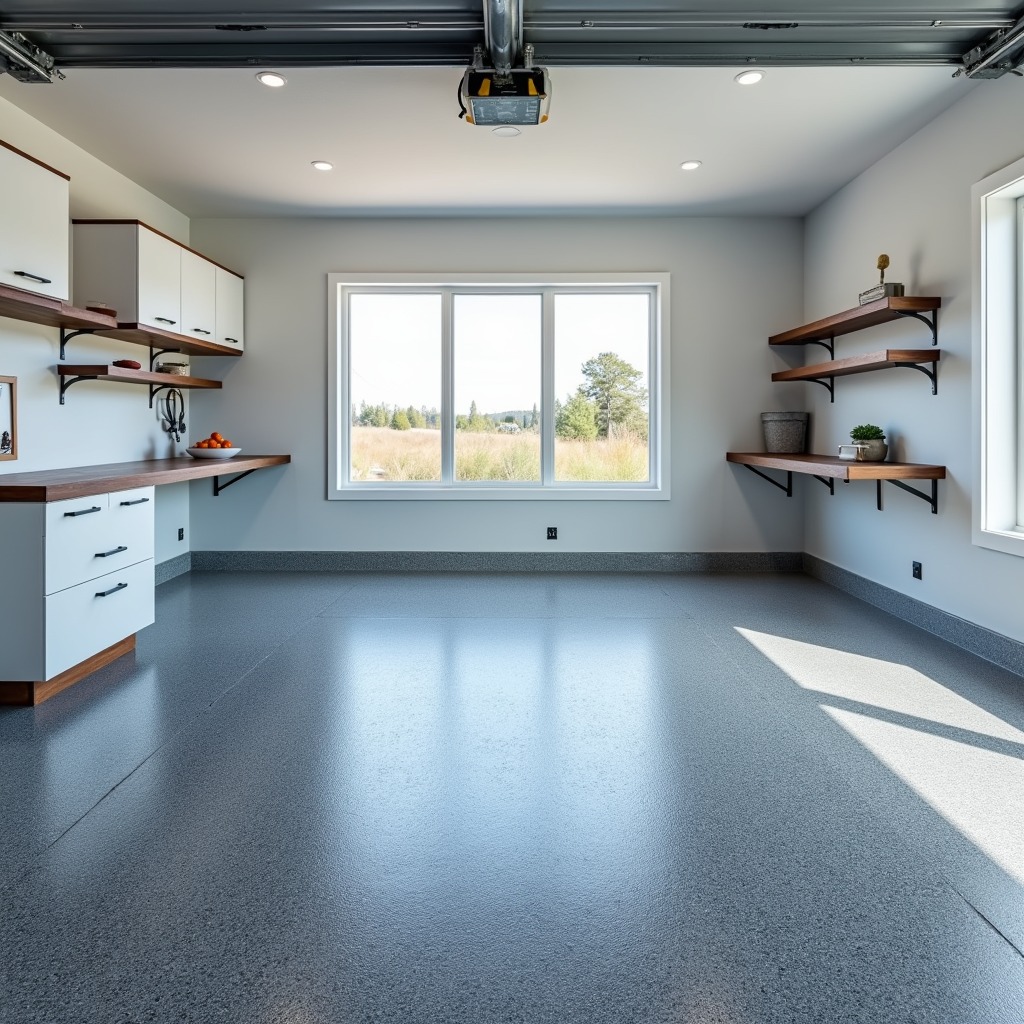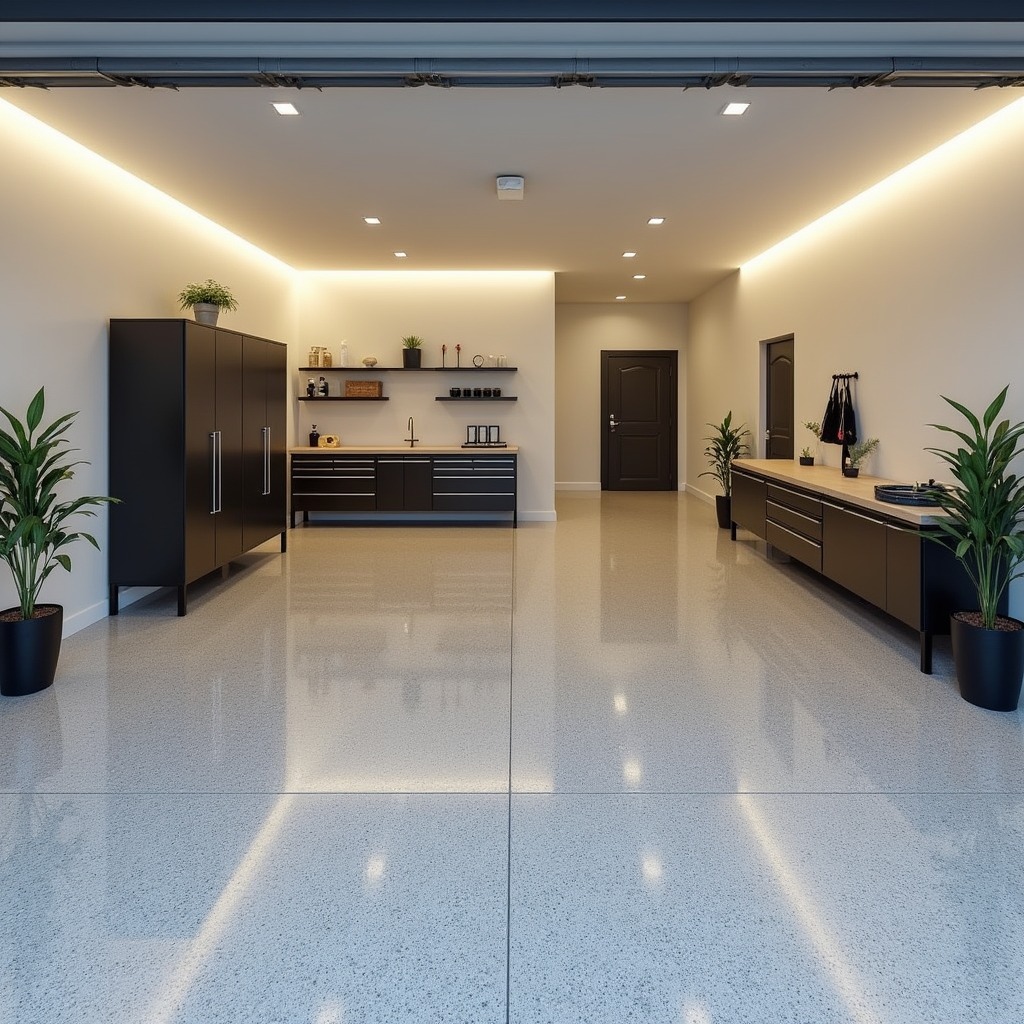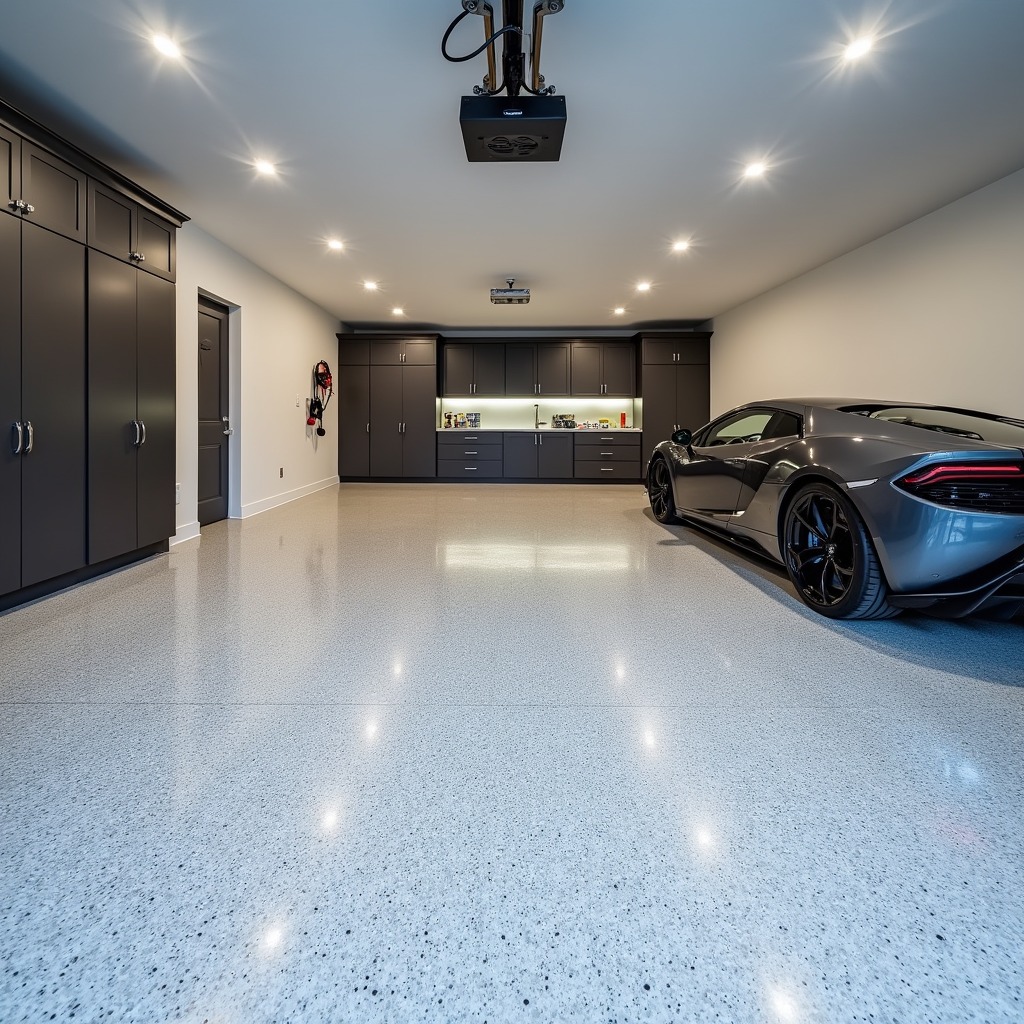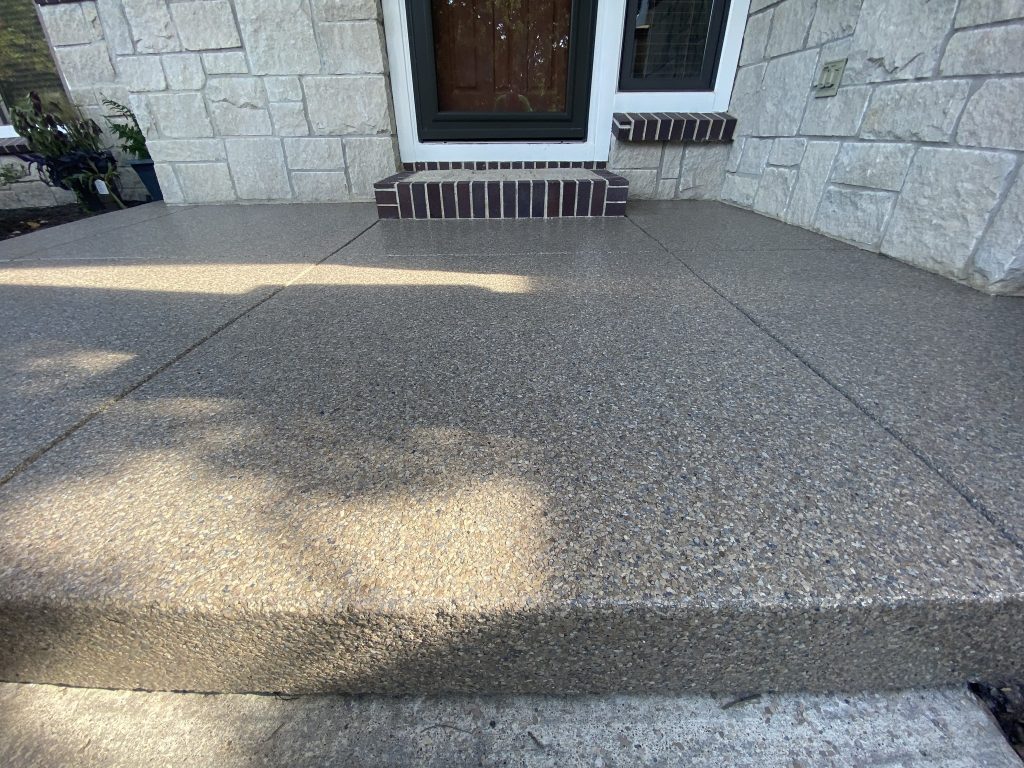When it comes to choosing the right floor coating for your garage, one question always comes up: polyaspartic vs epoxy—which is better?
Both epoxy coatings and polyaspartic floor coatings are popular choices for garage floor coatings, but they’re not created equal. While epoxy has been the standard for years, newer technology like polyaspartic coatings have started to take over. And at Garage Force, we’ve taken it a step further with our advanced CycloSpartic™ system—a cutting-edge solution that outperforms both. This ongoing polyaspartic vs epoxy debate has many homeowners weighing the pros and cons of each option.
In this blog post, we’ll break down the differences between polyaspartic vs epoxy, show you how they compare in real-world situations, and explain why CycloSpartic™ is the best solution for your concrete garage floor.
Introduction to Garage Floor Coatings
What Are Epoxy and Polyaspartic Coatings?
Let’s start with the basics. Epoxy coating is made from a mix of epoxy resin and a hardener.
What is Epoxy?
Epoxy floor coating is made from a mix of epoxy resin and a hardener. Once applied, it forms a thick, hard layer over your concrete floor. Epoxy coatings are used in garages, basements, and even some commercial spaces because they can handle foot traffic, vehicle fluids, and chemical spills.
While epoxy floors offer a durable surface, they come with some downsides—long cure times, vulnerability to UV rays, and the dreaded hot tire pickup, where your tires peel the coating off the ground.
What is Polyaspartic?
Polyaspartic coating is a newer type of floor coating that cures faster and performs better in many ways. It’s part of the polyurea coating family, but it has better pot life, which means it’s easier to work with before it hardens.
Polyaspartic coatings are:
- More UV resistant
- Better for cold temperatures
- Quicker to install
- More chemical resistant
- Longer-lasting
So when comparing polyaspartic vs epoxy, polyaspartic clearly leads in most categories.

Key Differences: Polyaspartic vs Epoxy
Let’s take a closer look at the key categories that matter for your garage floor or concrete floor.
Applying coatings like epoxy and polyaspartic can enhance the durability, aesthetics, and cleanliness of concrete floors, highlighting the advantages of coatings over unprotected surfaces.
1. Durability
- Epoxy coatings are strong, but they can crack under temperature changes or prolonged exposure to high traffic. Epoxy coatings become rigid once dry, which makes them more prone to cracking compared to polyaspartic coatings.
- Polyaspartic floor coatings are highly resistant to wear, impacts, and chemical resistance, making them ideal for garage use and high traffic areas.
Winner: Polyaspartic
2. Cure Time
- Epoxy can take several days to fully cure—sometimes up to a week. That means more downtime for your garage.
- Polyaspartic cures in just a few hours. Some systems are fully cured within a day.
Winner: Polyaspartic
3. UV Resistance
- Epoxy floors can yellow or fade when exposed to UV rays or sunlight.
- Polyaspartic garage floors are UV stable and maintain their high gloss for years.
Winner: Polyaspartic
4. Hot Tire Pickup
- Epoxy is notorious for hot tire pickup, where hot tires from your car lift the coating off the ground.
- Polyaspartic has a stronger bond to the concrete, reducing the risk of hot tire peel.
Winner: Polyaspartic
5. Slip Resistance
- Both epoxy and polyaspartic can be made slip resistant by adding texture or paint chips.
- But polyaspartic offers better grip when wet, especially in high traffic garages.
Winner: Polyaspartic
6. Application Process
- Epoxy requires proper surface preparation, acid etching, and has a short pot life, making it difficult for DIY projects. Epoxy coatings can consist of multiple layers, such as a primer, a base coat, and additional top layers, to enhance durability and visual appeal.
- Polyaspartic is more forgiving. It can be installed quickly—even over higher humidity or too much moisture with a proper moisture barrier.
Winner: Polyaspartic
Air Quality and VOCs
When it comes to garage floor coatings, air quality and VOCs (volatile organic compounds) are essential considerations. Polyaspartic coatings, for example, have low VOC emissions, making them a safer choice for indoor applications. Epoxy coatings, on the other hand, can increase airborne VOCs and cause poor air quality. It’s crucial to choose a coating that not only provides durability and protection but also ensures a healthy environment. Look for coatings with low VOCs, such as polyaspartic, to minimize the risk of air pollution and ensure a safe working space.
Customization and Aesthetics
Garage floor coatings are not just about protection; they can also enhance the appearance of your garage. With various color options and finishes available, you can customize your coating to match your personal style. Polyaspartic coatings, in particular, offer a high-gloss finish that can transform your garage floor into a stunning work of art. Epoxy coatings, too, can be customized with different colors and textures, providing a unique and durable finish. Whether you prefer a sleek, modern look or a more traditional appearance, there’s a garage floor coating to suit your taste.
Concrete Floor Preparation
Proper concrete floor preparation is essential for a successful garage floor coating project. Before applying any coating, it’s crucial to ensure the concrete surface is clean, dry, and free of cracks and imperfections. A moisture barrier may be necessary to prevent water damage and ensure a strong bond between the coating and the concrete. Additionally, the surface should be evenly spread and free of dust, oil, and other contaminants. By preparing your concrete floor properly, you can ensure a long-lasting and durable coating that will withstand the test of time.
Maintenance and Repair
Once your garage floor coating is applied, it’s essential to maintain and repair it regularly to ensure its longevity. Polyaspartic coatings, for example, are highly resistant to chemicals and UV rays, but they may still require occasional cleaning and touch-ups. Epoxy coatings, too, need regular maintenance to prevent cracks and damage. By following a simple maintenance routine and addressing any issues promptly, you can extend the life of your garage floor coating and keep it looking its best. Regular cleaning, inspection, and repair can help prevent costly repairs and ensure your coating continues to provide protection and aesthetic appeal for years to come.

What About Polyaspartic vs Epoxy for Cost?
We get it—budget matters. Epoxy is often cheaper upfront, which is why many homeowners go for it first. You can even buy kits at home improvement stores with step by step instructions.
But here’s the truth:
- Epoxy has a higher long-term cost due to maintenance, repairs, and reapplication.
- Polyaspartic may seem like an extra expense, but it saves money over time.
If you want to do it once and do it right, polyaspartic is worth it.
Introducing CycloSpartic™ by Garage Force: Better Than Epoxy and Polyaspartic
At Garage Force, we didn’t settle for standard polyaspartic floor coating. We created CycloSpartic™—a proprietary blend that takes everything great about polyaspartic and makes it even better.
Why Choose CycloSpartic™?
✅ Stronger Bond to Concrete
With a powerful base coat, CycloSpartic™ penetrates deep into your concrete floor, ensuring a durable finish that won’t peel, crack, or chip.
✅ UV Inhibitors
Our coating resists UV exposure, preventing fading and yellowing over time.
✅ Resists Oil, Chemicals, and Battery Acid
Perfect for garage floor use, it’s highly resistant to oil spills, chemical resistance, and even battery acid.
✅ No Hot Tire Pickup
Unlike cheap epoxies, CycloSpartic™ stands up to hot tires—no lifting, no peeling.
✅ Slip Resistant + High Gloss
You get a smooth finish with slip resistance built in. It also maintains a high gloss finish that makes your garage shine.
✅ Quick Installation
With our quick installation process, your garage floor is ready in just 24 hours.
✅ Works in Extreme Conditions
Whether it’s cold temperatures, higher humidity, or moisture issues, CycloSpartic™ handles it all.
✅ Full Broadcast System
We use a full broadcast system with colored epoxies and paint chips for a custom look and added durability.

CycloSpartic™ vs Other Systems: A Quick Comparison
| Feature | Epoxy | Standard Polyaspartic | Garage Force CycloSpartic™ |
|---|---|---|---|
| Cure Time | 3-7 Days | 1 Day | 1 Day |
| UV Resistant | ❌ | ✅ | ✅✅ |
| Hot Tire Pickup Resistant | ❌ | ✅ | ✅✅ |
| Chemical Resistance | Moderate | High | Extreme |
| Moisture Tolerance | Low | Moderate | High |
| Glossy Finish | Dulls Over Time | High Gloss | Long-lasting Gloss |
| Slip Resistance | Add-On | Add-On | Built-In |
| Durability | Good | Better | Best |
| Application Time | Long | Fast | Fast |
| Cost Over Time | High | Moderate | Low |
Don’t Settle for Less: Why CycloSpartic™ is the Best Garage Floor Coating
There’s a reason more homeowners and business owners choose Garage Force. We don’t just offer a high quality epoxy alternative—we offer the best garage floor coating system on the market. Using a polyaspartic topcoat as the final layer in a flooring system provides superior chemical resistance, UV stability, and lower susceptibility to scratching compared to epoxy coatings.
Our trained teams handle everything—from crack repair and surface preparation to full installation. You’ll have a floor that resists foot traffic, vehicle fluids, and harsh chemicals for years to come.
Forget garage floor paint, garage floor tiles, and garage floor mats that wear out quickly. Go with the system that’s built to last.

Conclusion: Polyaspartic vs Epoxy? Neither—Choose CycloSpartic™
When it comes to the polyaspartic vs epoxy debate, the answer is clear. Unlike polyaspartic, epoxy coatings are more prone to fading, cracking, and wear and tear, making polyaspartic a superior choice for concrete floor applications.
Polyaspartic beats epoxy in almost every category—durability, UV resistance, installation time, and chemical resistance.
But if you want the absolute best solution, choose CycloSpartic™ from Garage Force. It’s engineered for:
- Extreme durability
- Quick installation
- UV protection
- Oil and chemical resistance
- Slip resistance
- And a glossy finish that turns your garage floor into a showroom.
Don’t waste time or money on cheap epoxies that fail under pressure. Choose the system that does a better job, lasts longer, and gives you a floor you’ll be proud of.
Ready to Upgrade Your Garage Floor?
Contact your local Garage Force team today for a free consultation. Whether you’re looking to improve a concrete garage floor or starting a new flooring project, we’ll help you get the job done right—with CycloSpartic™.
Garage Force: Better Floors. Better Life. For insightful tips on finishing your garage, check out our comprehensive guide.

